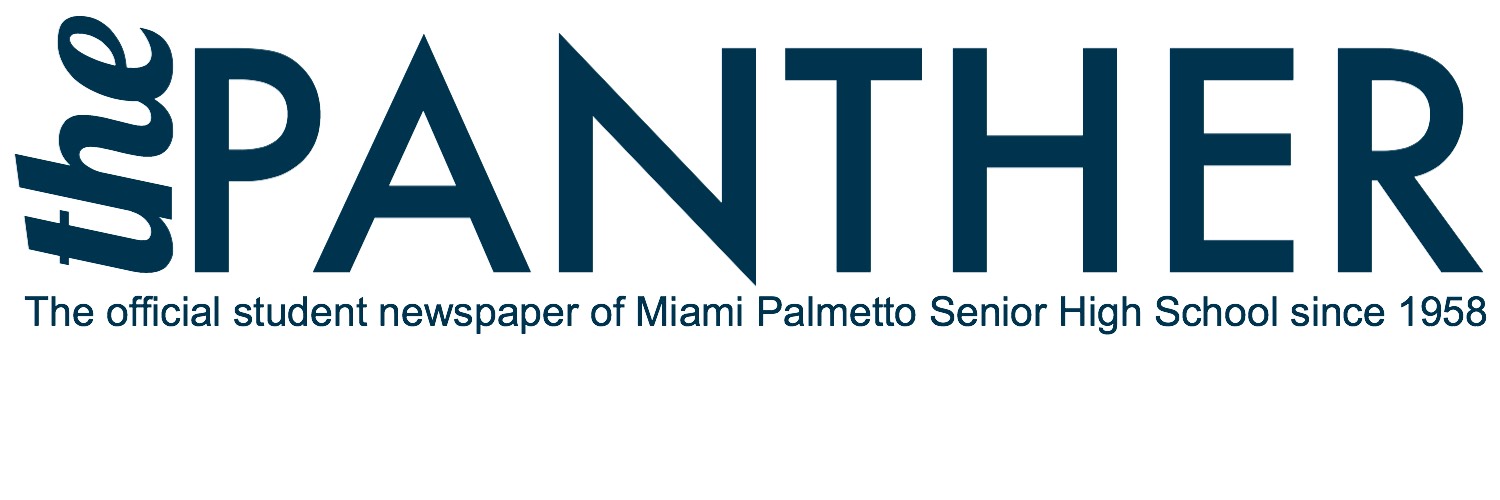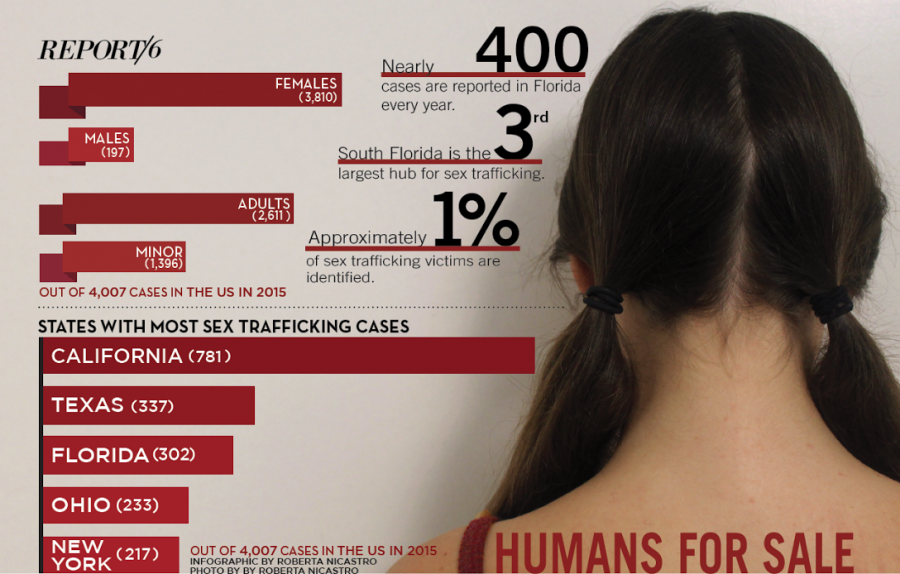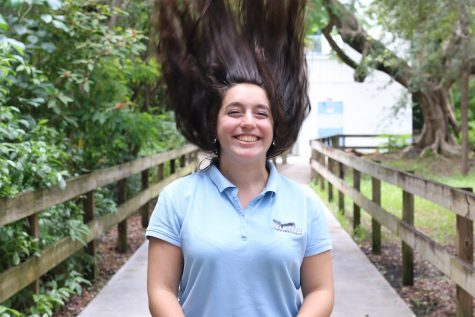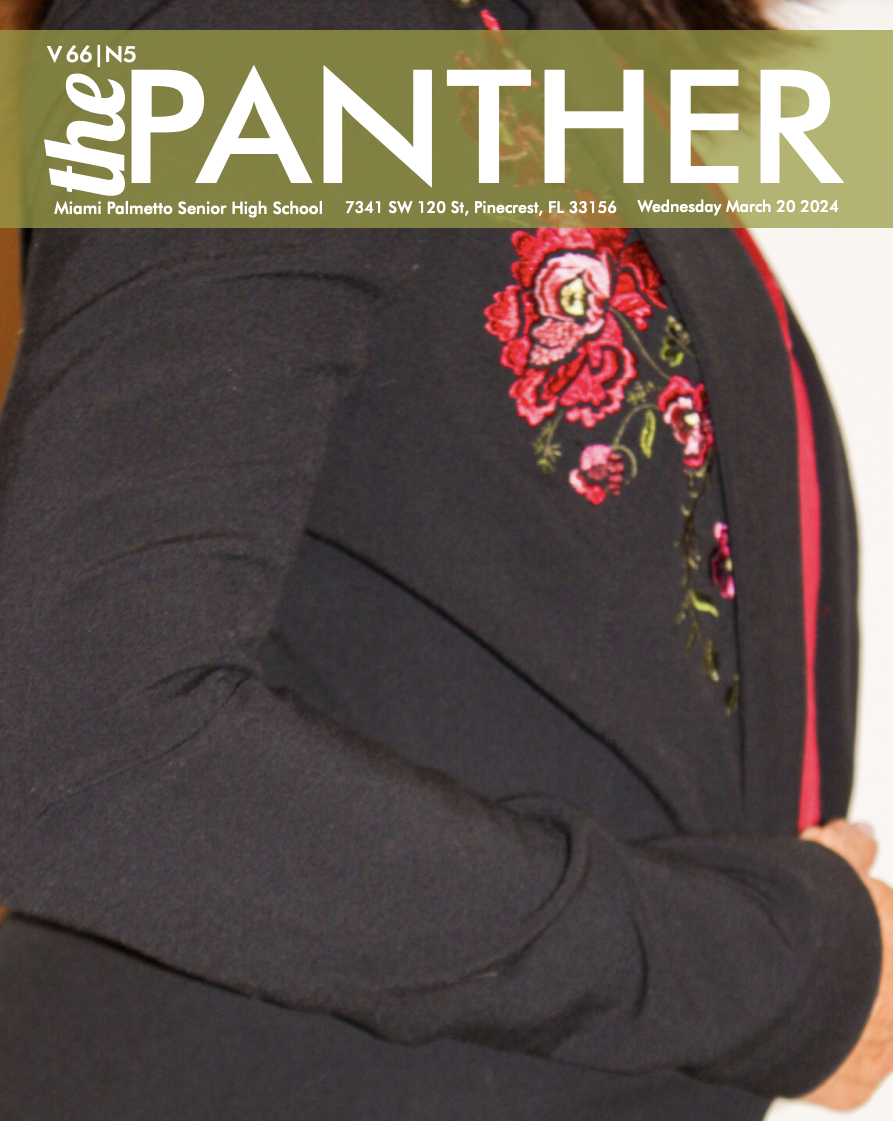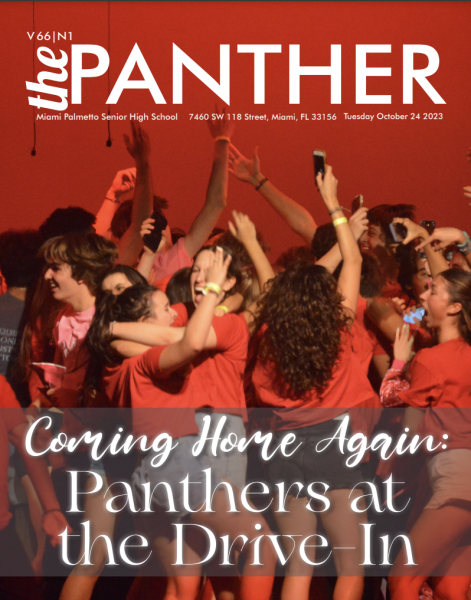Humans For Sale: No area is immune to Human Trafficking
April 29, 2016
A 13-year-old girl was involved in stripping and prostitution at Club Madonna in 2014. Two brothers in Southwest Miami Dade allegedly forced a 16 year old girl into having sex with at least 24 men per day for a month. Last year two women earned $600 from the sexual services of a 14 year old runaway seeking shelter at the Crossway Motel in Hialeah. The National Human Trafficking Resource Center states that Florida has the third-most sex trafficking cases in the United States, with South Florida and Miami largely responsible for the high rate. According to The Women’s Fund, children are sold for sex in Miami as young as 13 years old in some cases.
“I have never known anyone involved in sex trafficking or at least anyone publicly involved,” freshman Liam Reed said. “I don’t talk about it much, but when it comes up, the stories that you hear about it are inhumane and things like this should never happen.”
The Women’s Fund partners with the state attorney’s office as the lead organization in spreading awareness of human trafficking, to further inform students like Reed. Mary Andrews works as a consultant in their program against human trafficking. She suggested that many feel disconnected from the issue.
“It is difficult to understand the problem for many in the public when it does not seem to directly affect their everyday lives,” Andrews said. “It is a social problem that is affecting the vulnerable at risk youth in our community and the lower income families.”
Junior Marcos Young does not believe child sex trafficking directly affects his life.
“I don’t think this could ever affect me cause it’s a different social status, the people who go into trafficking,” Young said. “They get caught in drugs; they get caught in criminal activities and then they have to pay it off by trafficking their own body.”
While socioeconomic status does play a role in the victimization of these minors, Detective Kurtis Luek of The Miami Dade Police Department Special Victims Bureau asserts that even children living in safer neighborhoods such as Pinecrest or Palmetto Bay are vulnerable, after encountering human trafficking cases in both areas.
“Safer neighborhoods are no different from any other neighborhood. Any child could get involved in human trafficking,” Luek said. “Remember, just because it’s a safer neighborhood, doesn’t mean the children in that neighborhood don’t have some of the same indicators or problems another neighborhood child would have.”
Indicators of child sex trafficking described by the MDPD include sexual abuse, dysfunctional home life, learning or mental disability, emotional or financial distress, isolation and drug use. One in eight runaways will fall prey to human trafficking. The Ark of Freedom, an anti-trafficking organization, claims that LGBT children have a higher risk of homelessness, and in effect, higher risk for sexual victimization.
Child sex trafficking can also affect boys. The Ark of Freedom states that up to half of teen sex trafficking victims can be male.
“No one talks about how boys can be victims,” freshman Kelly Culhane said. “It’s pretty scary that it can happen to anyone.”
Underage victims are usually targeted where they congregate: schools, malls, social media platforms, group homes and public transportation, where pimps can use friends or peers to lure other children into the industry. Many times they will attempt to build a loving relationship with their victim or buy them expensive gifts. Pimps known to befriend female victims and lure them into human trafficking through a romantic relationship are known as “romeo pimps.”
“The greatest contributing factor is the vulnerability of low self-esteem, low socioeconomic levels [and] bullying by peers and youth within the foster system looking for a place to belong,” Andrews said. “They are lured in by the false ‘friendliness’ of a predator.”
Pimps usually control victims through forms of psychological manipulation such as drugs or violence. The longer a victim remains under a pimp’s control and gains loyalty to them, the less cooperative they usually are with law enforcement. The South Florida Refuge for Women states that women can leave the sex trade with PTSD, psychological triggers and personality disorders. The Miami Herald reports that a pimp can make up to $250,000 per year from a single child.
Meanwhile, the image of a prostitute choosing to sell sex by choice is still present in the minds of some students. Freshman Carolina Soria said that law enforcement should not treat prostituted victims as criminals after hearing about how pimps usually coerce them into the industry, but she originally thought differently.
“I do not think it’s right that police treat prostitutes as victims because at one point they decided they were going to get into that business,” Soria said. “They could have spoken up and done something. I think they should be considered as criminals in most situations.”
The Florida National Organization for Women claims that Florida’s booming tourism industry and close location to Latin America and the Caribbean creates a funnel for internationally trafficked victims for sex or labor. The Miami International Airport is considered a major entry point.
“We have a very active transient male population here, where guys come and go,” Luek said. “If they are here for sporting events, for example, a lot of these victims are used, so to speak, to service them. The Super Bowl is known as the biggest human trafficking event in the world.”
A study by Arizona State University’s School of Social Work revealed that six percent of adult males in Miami Dade County, about 140,000, people regularly buy sex.
The Women’s Fund has worked to combat sex trafficking in South Florida by uniting local providers and stakeholders to distribute awareness materials and engage in speaking events. Their efforts have resulted in a 24-hour businesses and airline personnel receiving training on how to identify and assist trafficked victims. Andrews says that students may also advocate for sex trafficking victims.
“Teens can insist that there is a safe place in their school for victims to go and speak with someone for help,” Andrews said. “Teens can also become aware of their surrounding peers and watch for signs of possible abuse, neglect and if someone is appearing out of character, and then approach the person or alert counselors or family members.”


